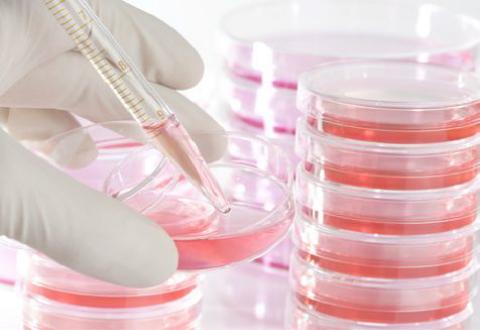Diagnosis of genetic diseases Part 2

The transfer of chromosomes, genes, and hence the transmission of information about hereditary diseases, possible in several schemes: autosomal dominant. If the child is "strong", dominant gene from at least one of the parents, then the gene will occur. Thus transmitted, for example, achondroplasia is a disease which interferes with the growth of the limbs, and the bones become brittle autosomal recessive.
It is slightly more complicated the attribute is shown only if the child received from the parents of two "weak", recessive, gene. The probability of disease is lower than in the first case. Thus inherited phenylketonuria, albinism and other diseases. With this type of inheritance occur both gene dominant and recessive. An example would be sickle cell anemia: the presence of an active dominant and recessive genes leads to the fact that in the bloodstream of normal and pathological form of hemoglobin. inheritance, sex linked. It is known that sex chromosomes do men and women differ: women have two X chromosomes and men have X and Y.
To sex chromosomes "attached" some important signs and information about diseases. For example, hemophilia is known to suffer almost exclusively by men: if the X chromosome in males contains the gene responsible for the pathology, the Y chromosome does not compensate, there is no this gene.
The same principle is passed the color blindness, muscular dystrophy, etc. the most common genetic disorders are: color blindness about 850 cases per 10,000; bifida 10-20 cases per 10,000 people; syndrome (an endocrine disorders that can cause male infertility) 14-20 - 10,000; down syndrome 9-13 - 10,000; Turner's syndrome (a disease that leads to sexual infantilism) is about 7 in 10,000; phenylketonuria (a metabolic disorder of amino acids) to 3.8 per 10 000; neurofibromatosis (a disease in which patients have tumors) about 3 in 10,000; cystic fibrosis 15 per 10,000; hemophilia up to 1.5 per 10,000.
The direction of genetic research Today, doctors identify genetic diseases with high accuracy, as advanced technologies allow us to literally look inside a gene, to determine at what level the violation occurred. Note In the foreign press have already reported that experiments conducted on methods of editing the genome to fight certain diseases. In particular, the journal Nature mentioned similar experiments in the field of HIV. There are several areas of the surveys. Diagnostic testing carried out if the patient has symptoms or features of external development that serve as the hallmark of genetic disease.
Before referral for diagnostic testing is conducting a comprehensive examination of the patient. One of the hallmarks of hereditary diseases is the failure of several organs and systems, so the allocation of a number of abnormalities, the doctor sends the patient for molecular genetic diagnosis.
Since many hereditary diseases (e.g. down's syndrome, Edwards) associated with the number of chromosomes (karyotype), then the validation is carried out karyotyping, that is, the study of the number of chromosomes. Required to analyze blood cells, which for several days is grown in a special medium and then painted. So the doctors isolated and each chromosome, determine whether they violated the quantitative composition, noted features of the external structure.
.png)